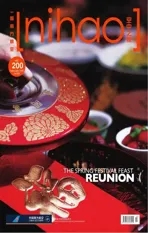1655年的繁华之城
2016-04-17
1655年的繁华之城
A CITY OF PROSPERITY IN 1655

On June 19, 1655, a 16-strong crew arrived at the south coast of China after two months' sailing from Batavia, now Indonesia's capital Jakarta.The delegation was comprised of Dutch envoys and representatives of the Dutch East India Company such as Pieter de Goyer and Jacob Keyzer.This was the fi rst Dutch mission to visit China.
The Qing government accommodated the delegation at Huaiyuan Courier Station in Guangzhou and arranged for them to go to Beijing the following year.John Nieuhof, the steward of the mission, took notes of his voyage and made many illustrations along the way.His work was made into prints and published as a collection on returning back to his home country.They became a valuable source of literature for Europeans to understand China visually for the fi rst time.
“Map of Canton” was a print made during the time when the Dutch delegation passed by Guangzhou 350 years ago.This panoramic view of Guangzhou has enabled us to have an understanding of the look and layout of the city at the time.What was marked “tower” on the map was the Zhenhai Tower on Yuexiu Hill - a famous landmark in the city.The “gate facing the fi eld” referred to the North Gate, today's west gate of Yuexiu Park.In another panoramic map of Guangzhou, one can see a number of foreign trade vessels of various sizes on the Pearl River, which offers a glimpse into the city's prosperous trade at the time.
Guangzhou, China's south gateway, is the oldest and longest running port-city throughout China.In the Ming Dynasty when the ban on maritime trade was constantly switching between on and off, the municipal maritime affairs bureau in many cities frequently closed, except Guangzhou.Cantonese Customs was set up in the Qing Dynasty when the ban was lifted.
In the 22nd year of Emperor Qianlong's reign (1757), Guangzhou became the one and only commercial port that was open to foreign countries.Products of all kinds over the Middle Kingdom were shipped to Guangzhou ready to be exported.These products came from provinces both close-by and afar, such as tea from Fujian, raw silk, silk products and green tea from Zhejiang, porcelain from Jiangxi, herbs and leather products from Shandong and Hebei, brass from Shaanxi, and mercury and tobacco from Gansu.Among them, tea and silk made up the largest percentage.The prosperity trade brought promoted the economic development of Guangzhou and made Cantonese customs tax one of the major sources of revenue for the Qing government, as Mr.Qu Dajun, a famous scholar and poet in the late Ming and early Qing, described in his poem, “Of fi cials and businessmen swarm onto foreign vessels as the city's gates are wide open to overseas countries.Cantonese satin is crowned to be the best while money piles up at the Thirteen Factories”.
1655年6月19日,荷兰政府使节及荷兰东印度公司成员豪伊尔、凯瑟尔等16人从巴达维亚出发,航行两个月后抵达中国海岸。这是荷兰首批赴华使团。
清政府安排使团下榻广州怀远驿,翌年进京。使团管事约翰·尼霍夫将沿途所见事物记载下来并绘制了大量画稿,回国后制成版画和游记出版,成为西方人第一次直观地了解中国的重要材料。
《广州城地图》便是350年前荷兰使团途经广州时绘制的版画。通过这张全景图,可以了解当时广州城的样貌和建筑分布情况。地图中标示的“塔”,即是越秀山上的镇海楼,在当时是广州的城标。“朝田野的城门”就是大北门,也就是越秀公园如今的西门。在另一张广州城全景图中,则可见到珠江上停泊着许多大大小小的外国商船,广州当时繁盛的商贸景象可见一斑。
乾隆二十二年(1757年),广州成为中国独一无二对外开放的通商口岸,全国各地的货物都从四面八方汇集到广州出口,近如福建的茶叶,浙江的生丝和丝织品、绿茶,江西的瓷器;远至山东和河北的药材、皮货,陕西的黄铜,甘肃的水银、烟草等都运来广州出口。其中尤以茶叶和生丝为大宗。对外贸易的繁盛,促进了广州地区经济的发展,粤海关的税收也成为清政府收入的重要来源。正如屈大均所言:“洋船争出是官商,十字门开向二洋,五丝八丝广缎好,银钱堆满十三行。”


Canton1840 is an initiator of mobile museums.Mr.Wen Shi, owner of the Canton1840 mobile museum, has been collecting forty thousand items representing Lingnan region culture and European culture in over forty years.(WeChat: canton1840)
文仕文化博物档案馆是“近代海丝文化流动博物馆”概念的创导者。馆长文仕先生历经40多年对珠江岭南地域文化及欧洲百年文化的搜集,收藏了近40000件博物馆级珍贵史料文物。(官微canton1840)
